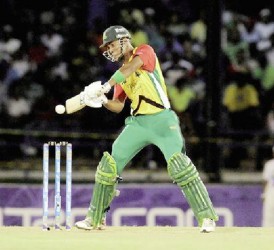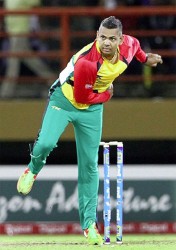After two seasons of the Limacol Caribbean Premier League T20 tournament, this particular version of the game is still on trial in our part of the world. Not that what is often the excitement and nail-biting tension that the T/20 game has infused into cricket is not altogether consistent with the West Indian disposition for high drama; the Caribbean, however, is not India.
We simply lack both the financial backing and the gates to hold forth with any certainty on the sustainability of T/20 though some of the matches in the 2014 Tournament certainly managed to keep the relatively modest numbers of patrons interested.
The glitz and glamour of the Indian Premier League (IPL) which has turned the players from the Asian continent and other parts of the world into millionaires ten times over, is now beginning to manifest itself here in the region. It provides, among other things, the opportunity for us to see the current crop of Caribbean stars alongside the next generation and to engage in our customary eternal arguments as to how previous generations of cricketers would have fared in this version of the game.
Some of those Caribbean players who have now come to be seen as ‘stars’ in the IPL mirror the rock star image which, only a generation ago was the purview of other sports.

The CPL announced itself with a considerable din last year as well-off businessmen from across the region jostled each other to make themselves seen and heard at the inaugural tournament. It may  have been cricket but the business moguls who sought to infuse their advertising dollars into the mele were not about to lose sight of the role that the CPL could play both as a tourism tool and – in a number of other respects – as a money spinner.
have been cricket but the business moguls who sought to infuse their advertising dollars into the mele were not about to lose sight of the role that the CPL could play both as a tourism tool and – in a number of other respects – as a money spinner.
This year’s tournament had a more settled appearance and featured international cricketers from the past and present including our own contemporary stars like Chris Gayle, Sunil Narine, Darren Sammy, Marlon Samuels and Kieron Pollard, some representing adopted countries.
Talent search
What is certainly good about the CPL is the option that it offers to those talented West Indian players who have not – at least not yet – been able to step into the IPL arena.
That is not surprising. India, after all, has a cricket ground ‘on every corner’ and a population of young men and women aspiring to be stars that exceeds the population of our entire region.
What the CPL has also done is to create a stage that is at least bigger than those offered by the individual territories so that even if the CPL is not the IPL it can at least create an atmosphere in which our youngsters can aspire to those heights.
This year witnessed the growth in talent and maturity from our Caribbean players who are now blessed with the opportunity to rub shoulders with their more celebrated overseas counterparts, drafted in by the respective franchises to liven-up the events and boost the gates.
For a number of obvious reasoms the CPL is unlikely ever to become an IPL. If, however, it manages to evade Caribbean cricketers propensity for im-ploding.
There is still a largely untapped market in North America where chiefly migrant Asians and West Indians have popularized the game.
There is, too an altogether unexploited market in Latin America. Who knows what might happen if our neighbours in the hemisphere can bring the same passion and intensity to cricket that they bring to football.







